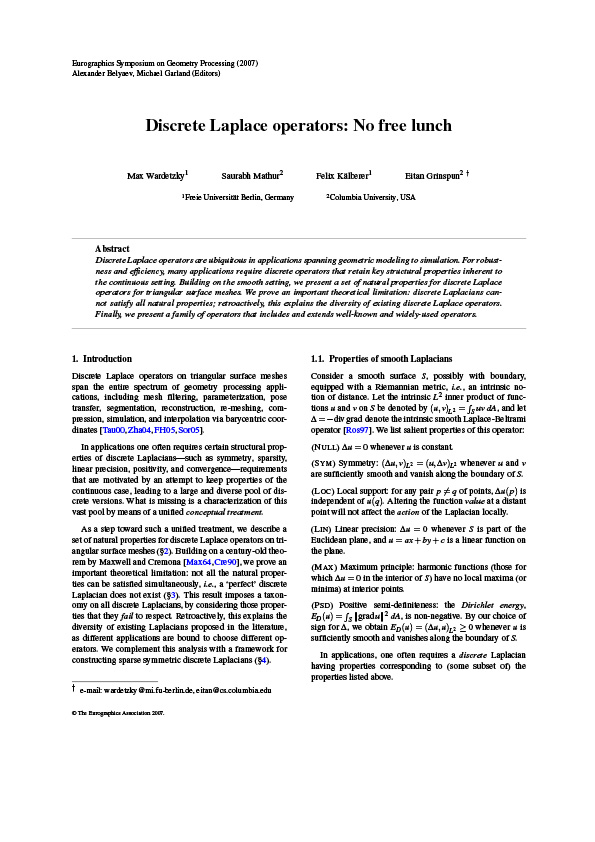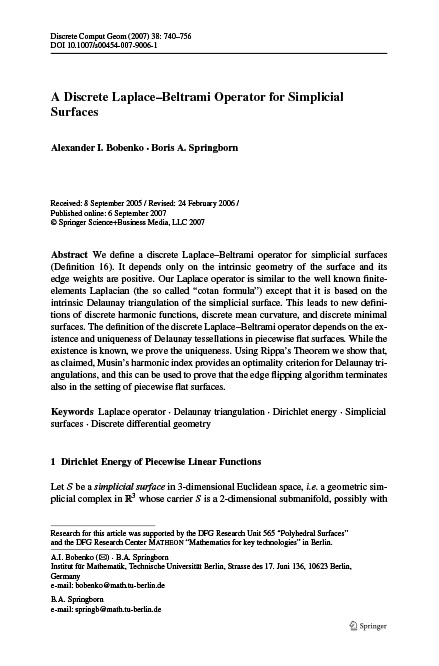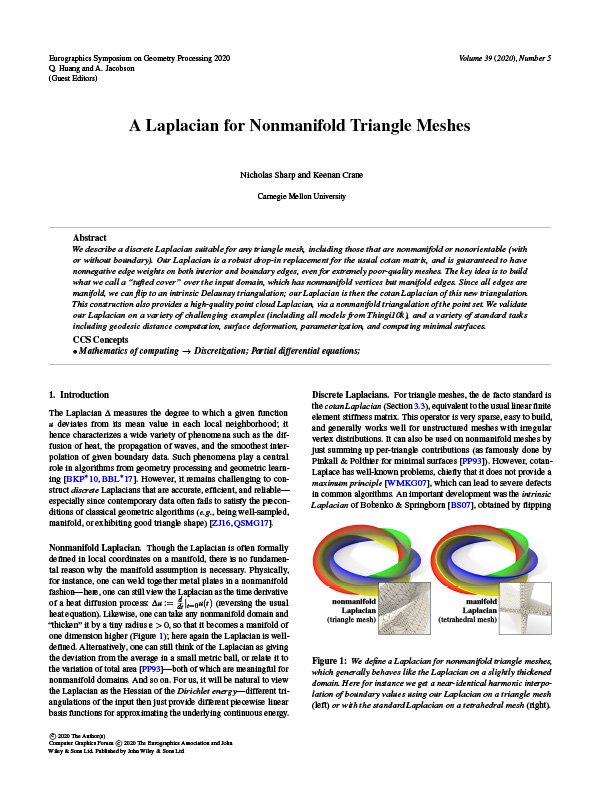Reading 6: Discrete Laplace Operator



Your next reading covers one of the most fundamental objects in differential geometry, and one of the most useful objects in practical geometry processing: the Laplace-Beltrami operator \(\Delta\), which we'll often refer to as just the “Laplacian”. This operator generalizes the familiar Laplace operator \(\Delta = \frac{\partial^2}{\partial x_1^2} + \cdots + \frac{\partial^2}{\partial x_n^2}\) from Euclidean \(\mathbb{R}^n\) to general curved manifolds. Like the ordinary Laplacian, at a very basic level Laplace-Beltrami provides information about the "curvature" of a function. It also shows up in an enormous number of physical and geometric equations, and for this reason there has been intense study of different ways to discretize the Laplacian (not only for simplicial meshes, but also point clouds and other discrete surface representations).
The reading will expose you to some of the key issues to think about when designing a discrete Laplacian. For this reading, you can choose one of the following two papers:
- Wardetzky, Mathur, Kälberer, Grinspun, “Discrete Laplace Operators: No Free Lunch” (2007)
- Bobenko & Springborn, “A Discrete Laplace-Beltrami Operator for Simplicial Surfaces” (2007)
- Sharp & Crane, “A Laplacian for Nonmanifold Triangle Meshes” (2020)